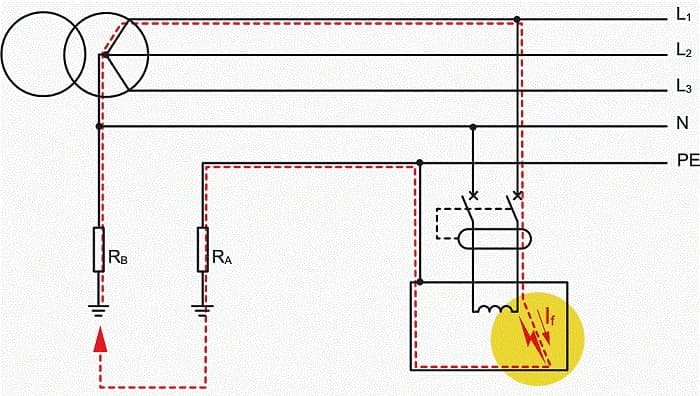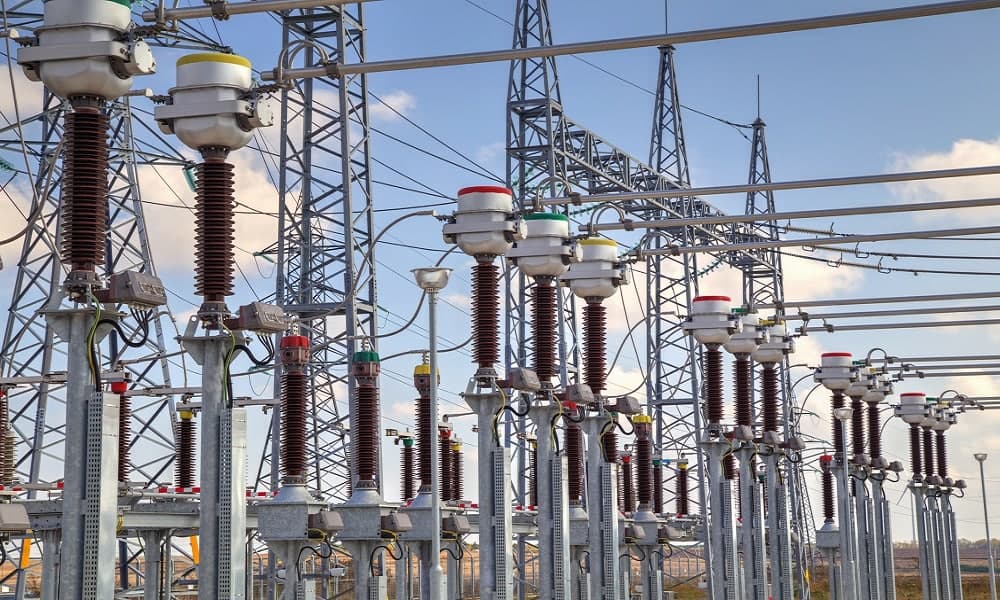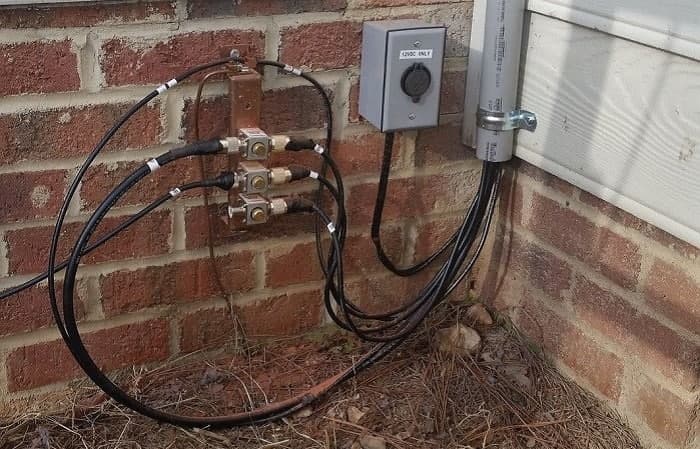Welcome to Linquip. We have already provided you with an article about the earthing system and its different types in full. In the present article, we intend to provide you with the concept of the TT Earthing System. In the following sections and because you might not read the previously constructed article on Earthing System, we will review some previously delivered ideas and data on what an earthing system is. Then we will mention some of the most important purposes of using grounding systems in industry and domestic areas and home appliances.
In the next section of this article, we are going to elaborate on some types of earthing systems and then what TT Earthing System is and how it differs from other types of Earthing Systems. In the two last sections of the article, we will talk about the main characteristics and advantages and disadvantages of the TT grounding system.
The connection to the supply source is directly linked to the earth, and the load end or installation metalwork is also directly connected to the earth in this sort of Earthing System. As a result, in the event of an overhead line, the earth’s mass will serve as the line’s return path. Because the power distributor only offers the supply neutral or protective conductor for the connection to the consumer, the neutral and earthing conductors must be separated during the installation. Several Suppliers and Companies, various manufacturers, and a large number of distributors supply TT earthing systems, and there are many TT Earthing Systems for Sale on Linquip.
There is a comprehensive range of TT earthing system services on the Linquip platform that meets all of your needs. Linquip can connect you with a number of different TT earthing system service providers and professionals who can help you. Linquip provides a list of TT Earthing System Specialists as well as subject matter experts who can help you with your equipment testing.
Stay with us until the end to get the answers to your questions on this topic.
What Is Earthing and What Does Earthing System Do?
An earthing system or grounding system connects specific parts of an electrical installation with the earth, typically the Earth’s conductive surface, for safety and functional purposes. The electrical earthing is known as the process of transferring the immediate discharge of the electrical flow directly to the earth. This transferring is accomplished by the aid of the low resistance wire.
The choice of earthing system can affect the safety and electromagnetic compatibility of the installation. Regulations for earthing systems vary considerably among countries, though most follow the recommendations of the International Electrotechnical Commission. Regulations may identify special cases for earthing in mines, in patient care areas, or hazardous areas of industrial plants.
Although Earthing is sometimes used for functional purposes, it is usually at services of safety purposes. For example, in the case of telegraph lines, the earthing is used as a conductor to save the cost of a return wire over a long circuit.
If there is a fault in an electrical installation, and this installation possesses no earthing system, a person could be damaged by an electric shock as touching a live metal part, because electricity uses the body of equipment as a path to the earth. Earthing job is to provide an alternate path for a fault current to flow to earth.
How Is Earthing Important?
in the previous section, we talked about what the earthing system is and what it does. Now we are going to list some of the most important purposes that earthing is at service for. There are several reasons below that show why using a grounding system is important.
Electrical circuits may be connected to the ground (earth) for several reasons. Earthing serves as:
- Personal protection
- Property/ operational protection
- Potential grading earthing
- Electro-magnetic pulses protection
- Lightning protection
Types of Earthing Systems
In the previous section, we brought some important purposes and goals that earthing is at service for. We talked about different types of protections that a grounding system provides. Now we are about to elaborate on different types of earthing systems.
There are 4 basic methods for earthing and providing the neutral of an electrical installation. The five methods and their abbreviations are named and elaborated below.
TN-S
In this method, there is a single point of connection between the supply neutral and earth at the supply transformer. The supply cables have separate neutral and earth protective conductors (S.N.E.). basically, the neutral conductor is a fourth ‘core’, and the earth conductor forms a protective sheath. The customer may have an earth terminal connected to the sheath of the service cable or a separate earth conductor.
In the UK and before the introduction of protective multiple earthing (PME or TN-C-S) systems, the TN-S method was pretty much the standard arrangement.
TN-C-S
In this method, the supply cables have a combined neutral and earth metallic outer sheath with a PVC covering. The combined neutral earth sheath is the PEN (protective earth neutral).
The supply within the customer’s premises would usually be TN-S, which means that the neutral and earth would be separate, linked only at the service position. When combing the neutral and earth within the premises, then the system is TN-C.
IT
This is a system without a direct connection between live parts and earth, but with its exposed conductive parts of the installation earthed. Sometimes a high impedance connection to earth is provided to simplify the protection scheme required to detect the first earth fault.
TT
This method is a system where the supply is earthed at one point only, but the cable sheaths and exposed metalwork of the customer’s installation are connected to earth via a separate electrode which is independent of the supply electrode.

What Is TT Earthing System?
The TT method refers to a protective system that directly grounds the metal housing of an electrical device, which is called a protective earthing system, also called a TT system. The first symbol T indicates that the neutral point of the power system is directly grounded; the second symbol T indicates that the conductive part of the load device that is not exposed to the live body is directly connected to the ground, regardless of how the system is grounded. All grounding of the load in the TT system is called protective grounding. The characteristics of this power supply system are as follows.
At present, some construction units use the TT system. When the construction unit borrows its power supply for temporary use of electricity, a special protection line is used to reduce the amount of steel used for the grounding device.
With a TT configuration, consumers employ their earth connection within the premises, which is independent of any earth connection on the source side. This type of earthing is typically used in situations where a distribution network service provider (DNSP) cannot guarantee a low-voltage connection back to the power supply.
What Is the Difference Between TT and TNS System?
TT: the source and load are both connected to the earth, but there is no connection between the earth and neutral. There is TN-C, which uses a common cable for the earth and neutral, TN-S, which separates neutral and earth but uses the same earth as the source, and TN-C-S, which uses a common point for the earth and neutral but has cables for both.
Does a TT System Need an RCD?
Regulation 411.5. 2 normally mandates the installation of one or more RCDs as a protective device for fault protection when an installation is part of a TT earthing system, regardless of the type of material the consumer unit is made of.
Main characteristics of TT Grounding System
Below, we will list some most important characteristics that TT system possesses.
- Simplest solution to design and install. Used in installations supplied directly by the public LV distribution network.
- Does not require continuous monitoring during operation.
- Protection is ensured by special devices, the residual current devices (RCD), which also prevent the risk of fire when they are set to ≤ 500 mA.
- Each insulation fault results in an interruption in the supply of power, however, the outage is limited to the faulty circuit by installing the RCDs in series (selective RCDs) or parallel (circuit selection).
- Loads or parts of the installation which, during normal operation, cause high leakage currents, require special measures to avoid nuisance tripping, i.e. supply the loads with a separation transformer or use specific RCDs.
Advantages of the TT system
Here are some of the most important and prominent advantages of the TT system that can cause everyone to use it.
- Simplicity (very few calculations when installing)
- Extension with no need to calculate the lengths
- Low fault currents
- Very little maintenance
- Safety of people when portable devices are supplied or if earthing is defective (with 30 mA RCDs)
- Operation on a source at the low prospective current
Disadvantages of the TT system
Below we mention some of the most essential cons of the TT system that you need to consider.
- No differential discrimination if only one device at the supply end of the installation
- Need for RCDs on each outgoing line to obtain horizontal discrimination (cost)
- Risk of false tripping
- Interconnection of exposed conductive parts to a single earth connection (widespread installations) or RCD needed for each group of exposed conductive parts
- The level of safety depends on the value of the earth connections
Conclusion
In this article, we tried to give you all the essential and comprehensive information about TT Earthing System. we talked about the basic definitions and give you some information about what grounding system. Then, we elaborated on the purposes of using the Grounding system. At the next stage, we reached the main part of the article i.e. “what is the TT grounding system?”. In the two last sections of the article, we will talk about the main characteristics and advantages of the TT grounding system. All we did in this article was an attempt to make it easier for you to understand the concept of the TT earthing system used in different electrical installations.
If you have any experience of using this type of earthing system and know more about it, we will be very glad to have your opinions in the comments on our website Linquip. Moreover, if you have any questions about this topic, you can sign up on our website and wait for our experts to answer your questions. Hope you enjoyed reading this article.
Download TT Earthing System PDF
Buy Equipment or Ask for a Service
By using Linquip RFQ Service, you can expect to receive quotations from various suppliers across multiple industries and regions.
Click Here to Request a Quotation From Suppliers and Service Providers
Read More On Linquip
- A Definitive Guide to TNCS Earthing System
- Earthing System: A Simple Explanation about Grounding System
- IT Earthing System: The Key and Essential Facts Everybody Wants to Know
- Difference Between Grounding and Earthing
- TNC Earthing System։ A Detailed Explanation
- What is Electrical Identification? (2022 Ultimate Guide)
- How to Use and Read a Hydrometer: Ultimate Guide
- Difference Between Actuator and Sensor: The Ultimate Guide
- Difference Between Voltmeter and Ammeter
- What is Electrolytic Capacitor? Usage & Application
- What is Synchroscope? Method & Working Principles
- All Types of Pneumatic Fittings: Specifications and Applications
- What is Polarized Capacitor? Function and Applications
- What is Time Division Multiplexing – TDM: A Basic Guide
- Types of Thermometers: All You Need to Know
- What Is a Digital Potentiometer? An Explanation on the Working Principle and Advantages
- A Complete Answer To What Is A Pressure Gauge
- What is Potentiometer ? The Ultimate Guide to Knowing Potentiometers And Their Construction





good job
Your insight is much appreciated. Our industrial directories provide hundreds of distinct pieces of machinery for sale, categorized by use and need.